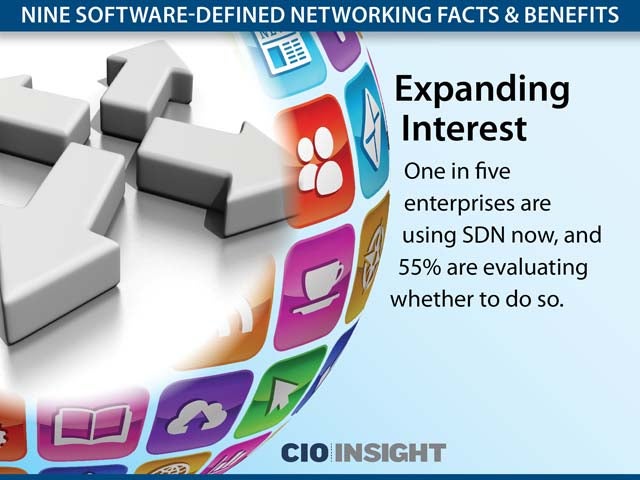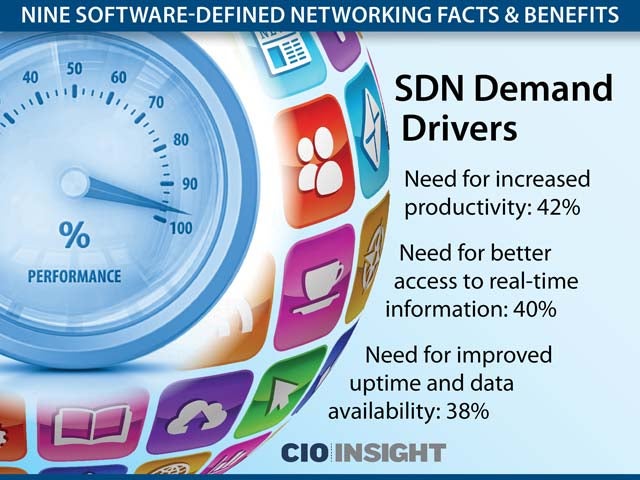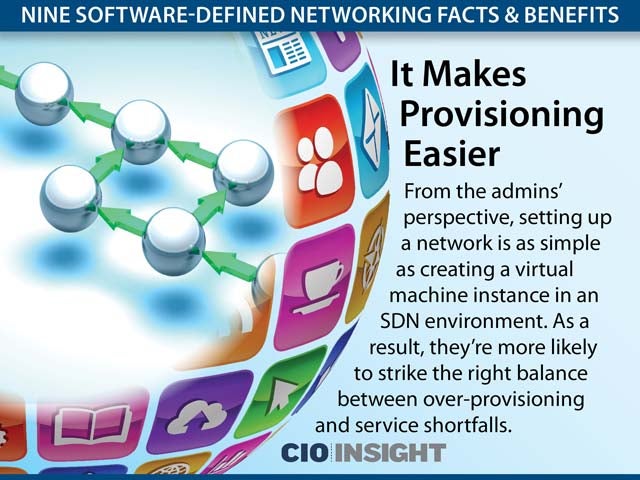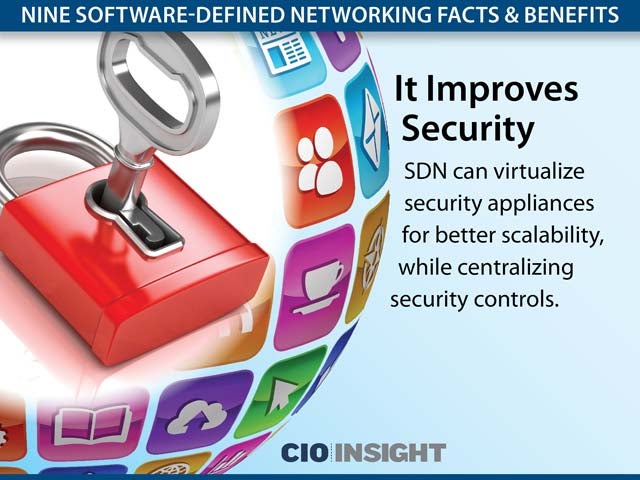
Nine Software-Defined Networking Facts & Benefits
 Robust Growth
Robust Growth
The SDN market is expected to reach $2 billion by 2016, up from $200 million today.
 Expanding Interest
Expanding Interest
One in five enterprises are using SDN now, and 55% are evaluating whether to do so.
 SDN Demand Drivers
SDN Demand Drivers
Need for increased productivity: 42%, Need for better access to real-time information: 40%, Need for improved uptime and data availability: 38%
 Elusive Concept
Elusive Concept
40% of network pros say SDN is an indefinable term, even as they’re considering implementing it.
 IT Reduces Costs
IT Reduces Costs
For starters, enterprises won’t need expensive switches to shape network traffic, since admins can do it themselves with automated tools.
 It’s Open Source
It’s Open Source
Because SND adheres to open standards, it can operate with any vendor’s network hardware.
 It’s Extremely Agile
It’s Extremely Agile
With SDN, users more readily connect to different clouds, apps and network devices.
 It Makes Provisioning Easier
It Makes Provisioning Easier
From the admins’ perspective, setting up a network is as simple as creating a virtual machine instance in an SDN environment. As a result, they’re more likely to strike the right balance between over-provisioning and service shortfalls.
 It Improves Security
It Improves Security
SDN can virtualize security appliances for better scalability, while centralizing security controls.